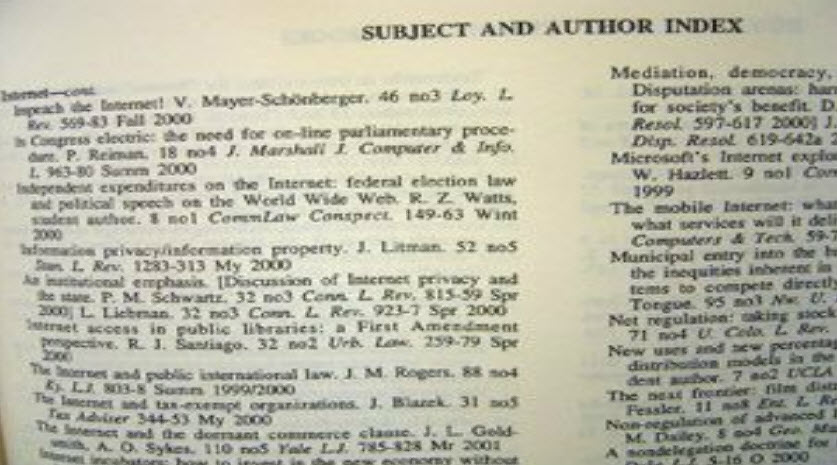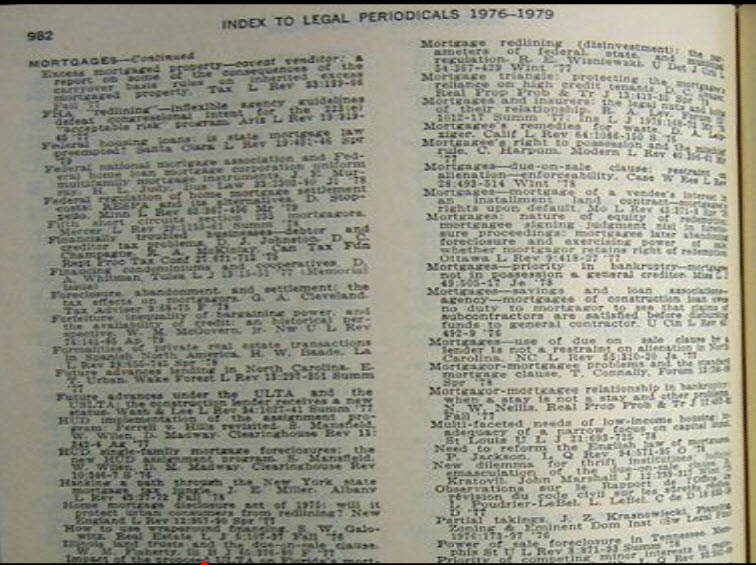Critical knowledge & skills for the Law Library
 |
There are literally hundreds of legal periodicals. The Duke Law Review. The Environmental Law Journal. The ABA Journal. And hundreds more. The general rule of legal research is to begin in the index. So does this mean the researcher would have to go to the index of each of these hundreds of sets? Well, it gets worse! The majority of these periodicals DO NOT HAVE THEIR OWN INDEX! So, what do you do? The Index to Legal Periodicals is a very useful tool when attempting to locate a periodical article. It indexes almost all legal periodicals.
|
|
THE INDEX (?) This set of books is, in fact, one massive index. The books are arranged by year, with a new set of indeces coming out each year. In addition, each year indexes the material by subject matter, as well as by the title of the article or the name of the author.
|
|
THE MAIN VOLUME The researcher may want to start in the most recent year covered by
|
|
MORE . . . Notice the stack of Restatement of Contracts on the shelf to the left. Looking from left to right, first identify the Main Volumes. (In this case, the three first volumes on the far left are the Main Volumes. You may need to ZOOM OUT a little to see the first book, which is partially obscured.) Next, locate the Index. It is generally found in the back of the last Main Volume. Can you see the Index labeled on the spine of the last main volume? Finally, you will see several volumes titled "Appendix." Any volume with the section number you have found should be checked for references to authority. Also, make sure to always check the pocket part in the main volumes and appendices. Restatements are legal treatises, and are therefore considered secondary authority.
|



